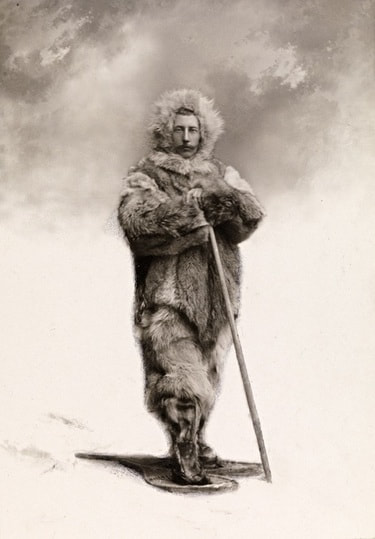English/Language Arts
Explore focus in narrative nonfiction
Author Whiting has provided another mentor text for students who are writing about famous people. Whiting has chosen a lens through which to tell his story, staying true to the focus and thus creating a Minute that makes the reader want to keep reading. Have your students determine his focus and compare it to other Minutes about people. What is the “lens” used in each? Have them compare it to a piece they have written. Do they have a focus? What options are available?
Social Studies
Explore explorers
Have your students take a closer look at exploration and explorers. Create a timeline of explorers and locate all routes on a world map. Ask your students to consider who is doing the exploring and why. What is left to explore at the close of the 19th century? Once all land masses on Earth are explored, what frontier do humans begin to explore?
Explore European geography
Locate Norway and Great Britain on the map. Now find the South Pole and Antarctica. Which explorer was closer to his destination? What advantages and disadvantages did each face? Did their geography of origin give either an advantage? Why or why not?
STEM
Explore seasons
This Minute is a perfect read to introduce the effect of geographic location and climate. Have your students table talk about why there might be good weather at the South Pole in December. Why wouldn’t you start a trip in May or June? Get out a globe a sun model to demonstrate the hemispheric flip of seasons. This is also a good time to think about time zones around the world.
Explore biomes - tundra
Author Whiting speaks of the men eating seal meat to celebrate. Take a look at the biome these groups were exploring. What other kinds of nutrition might be available? Vegetation? How much diversity is there in the types of organisms living in these extreme environments? Are there insects? How do things decompose in this extreme environment?
Research Skills
Explore site searching by domain extension - .edu
Understanding the meaning of domain extensions and learning how to search by limiting extensions can make students more refined searchers. Introduce the .edu extension - a domain limited to post K-12 educational organizations. Searchers can limit results to this domain extension by preceding their search with site:edu followed by your selected keywords. Have students experiment by doing a search for the tundra biome, and then a second search using the string site:edu tundra biome. Students can also experiment by putting the keywords into quotation marks which will yield only results that contain the two words together, rather than results that contain one, the other, and both terms.
Explore focus in narrative nonfiction
Author Whiting has provided another mentor text for students who are writing about famous people. Whiting has chosen a lens through which to tell his story, staying true to the focus and thus creating a Minute that makes the reader want to keep reading. Have your students determine his focus and compare it to other Minutes about people. What is the “lens” used in each? Have them compare it to a piece they have written. Do they have a focus? What options are available?
Social Studies
Explore explorers
Have your students take a closer look at exploration and explorers. Create a timeline of explorers and locate all routes on a world map. Ask your students to consider who is doing the exploring and why. What is left to explore at the close of the 19th century? Once all land masses on Earth are explored, what frontier do humans begin to explore?
Explore European geography
Locate Norway and Great Britain on the map. Now find the South Pole and Antarctica. Which explorer was closer to his destination? What advantages and disadvantages did each face? Did their geography of origin give either an advantage? Why or why not?
STEM
Explore seasons
This Minute is a perfect read to introduce the effect of geographic location and climate. Have your students table talk about why there might be good weather at the South Pole in December. Why wouldn’t you start a trip in May or June? Get out a globe a sun model to demonstrate the hemispheric flip of seasons. This is also a good time to think about time zones around the world.
Explore biomes - tundra
Author Whiting speaks of the men eating seal meat to celebrate. Take a look at the biome these groups were exploring. What other kinds of nutrition might be available? Vegetation? How much diversity is there in the types of organisms living in these extreme environments? Are there insects? How do things decompose in this extreme environment?
Research Skills
Explore site searching by domain extension - .edu
Understanding the meaning of domain extensions and learning how to search by limiting extensions can make students more refined searchers. Introduce the .edu extension - a domain limited to post K-12 educational organizations. Searchers can limit results to this domain extension by preceding their search with site:edu followed by your selected keywords. Have students experiment by doing a search for the tundra biome, and then a second search using the string site:edu tundra biome. Students can also experiment by putting the keywords into quotation marks which will yield only results that contain the two words together, rather than results that contain one, the other, and both terms.
© Karen Sterling, 2018 - May be used for educational purposes without written permission



